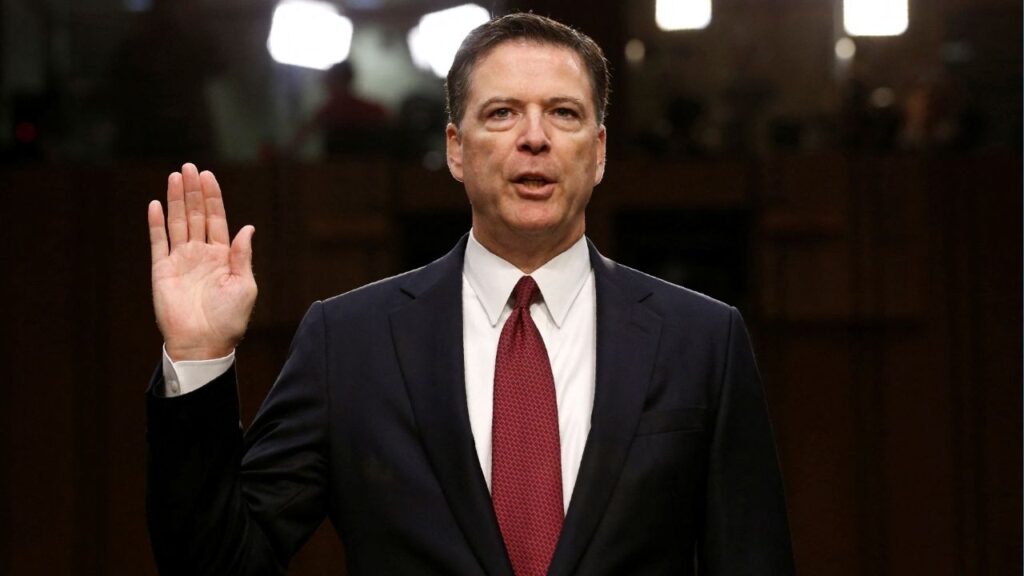Investors have seemingly shrugged off trade tensions and geopolitical turmoil, but the gains in the stock market don’t tell the whole story. (Alvaro Dominguez/The New York Times)

- Stock market gains mask deeper investor concerns about tariffs and government debt.
- Tech giants drive S&P 500 rally while broader market shows less enthusiasm.
- Options markets signal expectations for potential volatility later this year.
Share
Investors have a lot to worry about at the moment.
There are tariffs and the growing federal deficit; immigration raids that have targeted businesses across the country; and, most recently, another major war in the Middle East, between Israel and Iran. Consumers are worried, business confidence is low, and corporate profits are expected to fall.
Despite it all, stocks are climbing.
The S&P 500 is less than 2% below its record high, and the volatility that racked financial markets just two months ago has quieted.
There are reasons for this: The worst anxiety whipped up in April by President Donald Trump’s trade war has abated as the White House has delayed tariffs, offered carve-outs and hailed agreements with trading partners that signal his willingness to back down from a hard-line stance. Plus, inflation data continues to show that tariffs have yet to lead to sharply higher consumer prices. And while investors worry about the impact of deportations and federal staffing cuts on the labor market, so far the data shows that the economy remains resilient.
Even the dip in stocks that followed Israel’s attack on Iran appears to have been short-lived.
But for some investors and analysts, the gains in the stock market don’t tell the whole story.
Market Uncertainty Lurks Beneath the Surface
In derivatives markets, investors are still bracing for a steep drop in stocks later in the year. In the bond market, concerns over the U.S. government’s $35 trillion debt linger. Peeling back the layers of the S&P 500 itself shows investors are less bullish than the nearly record high would suggest.
“It’s a divide,” said Ralph Axel, an interest-rate strategist at Bank of America. “On the outside, it looks like a relatively normal market, but there is also very large underlying uncertainty.”
After sliding almost 19% from its peak in February, the S&P 500 bottomed out April 8 and began to rally the next day when Trump delayed many of his administration’s steepest tariffs until July. The index rose almost 10% in one day.
Since then, every big move higher — when the S&P 500 rose 2% or more — has come on a day with a significant announcement reining in tariffs. The largest gain, 3.3% on May 12, was the day China and the United States agreed to pause so-called reciprocal tariffs that had risen above 100%.
“Aggressive ‘reciprocal tariffs’ got the market into a mess, so a pause of those tariffs got the market out of that mess,” said Liz Ann Sonders, chief investment strategist at Charles Schwab.
Every major group of companies in the index — from banks to retailers to oil companies — has climbed since the low point in April, but investors have been most enthusiastic about a small number of familiar technology stocks: those of giants like Alphabet, Meta and Nvidia.
Tech Giants Drive the Rally
This is a persistent characteristic of the S&P 500 in recent years. The way it’s calculated means that the biggest companies in the index have the biggest impact — both when it is rising and when it is falling. And the growth of these tech companies has far outpaced that of other businesses, meaning the biggest companies in the index are bigger than any have ever been relative to the rest of the index.
Remove them, and the story looks very different. Without the so-called Magnificent Seven stocks — Microsoft, Amazon, Tesla, Apple, Nvidia, Meta, Alphabet — the rally since the index hit its April low would be almost cut in half, according to data from Howard Silverblatt, an analyst at S&P Dow Jones Indices.
A variation of the S&P 500 that’s calculated by giving equal weight to each company in the index is 4.7% away from its own record.
“The benchmark doesn’t behave like we remember it,” said Peter Tchir, head of macro strategy at Academy Securities. “It has become so skewed to a few companies that it reflects those companies better than the average stock.”
While the turbulent stock price swings from April have calmed, investors are still nervous that volatility could return, as questions remain unanswered about tariffs, government spending and even the supply of workers for the economy after an immigration crackdown.
The signal being sent from the options market is that investors are girding for a potential stock slide this year.
Options allow investors to bet on where the S&P 500 (and other securities) will wind up days, weeks or months into the future, so options trading can be illustrative of what investors are expecting down the line.
One signal comes from the VIX, the index that reflects investors’ expectations of volatility in the S&P 500 over the next 30 days. The VIX, which is widely known as Wall Street’s fear gauge, spiked in April, but it has since eased, suggesting investors expect things to stay calmer for now.
But a similar gauge of expected volatility suggests that traders don’t have as much confidence in the longer-term outlook: Implied volatility of the S&P 500 over the next six months is in the 96th percentile, according to data from Cboe Global Markets, meaning that it has been higher only 4% of the time.
Oil Prices and Government Debt Pose Risks
A more immediate threat to the market is the potential for inflation to accelerate again, as many economists have predicted. But while some of Trump’s tariffs are expected to raise consumer prices, so far that hasn’t been seen in the data, keeping markets calm.
A sustained surge in oil prices could change that. That would reverse the trend of falling oil prices over the past year, which has helped keep inflation contained.
Prices did jump last week as Israel launched a large-scale attack on Iran. Those gains — about 10% — lifted prices only to around where they stood last year, on average. But the situation, including the potential for disruption to global oil exports that run through the Persian Gulf, could still escalate.
Even without the worst-case scenario, the longer the conflict runs, the more likely oil prices could add to inflationary pressures already building in the economy. That would give the Federal Reserve reason not to cut borrowing costs while weighing on the mood in markets.
Outside the world of stocks, investors are bracing for a different kind of problem.
As Republicans advanced a policy bill that would extend tax cuts and create new ones without significantly slashing spending, concerns over Washington’s ability to manage its ballooning debt sent yields on government bonds soaring.
Higher yields, like higher interest rates on a mortgage or credit card, suggest the borrower — in this case, the U.S. government — has become riskier. At nearly 5%, the yield on the 30-year Treasury is close to its highest level since October 2023.
But another measure of risk in the government bond market, one that compares the yield on U.S. Treasurys with so-called risk-free rates, is close to its highest level on record, which goes back to 2020.
It has to do with something called SOFR, or the Secured Overnight Financing Rate, which is indicative of the rate at which banks, asset managers and hedge funds lend money to each other overnight. SOFR came to replace LIBOR, or the London Interbank Offered Rate, which had become tarnished by a rigging scandal.
SOFR is seen as the closest thing to a risk-free interest rate in the market — meaning it represents the baseline for interest rates regardless of who is doing the borrowing — and the gap between SOFR and the 30-year Treasury yield has widened to its highest level in data to date.
It could be a sign of investors’ waning appetite for more U.S. government debt, or that they see an increased likelihood of the government failing to pay back its lenders.
Either way, this poses a risk not only to bond investors but also to the stability of financial markets globally, in the stock market and elsewhere. If the steady and orderly rise in Treasury yields hits a breaking point, yields could rise suddenly and sharply.
And because Treasury yields are part of the foundation for financial markets, borrowing and valuations around the world, the impact of such a spike could be severe.
So far, that has not materialized. A sale of 30-year debt last Thursday went smoothly.
But Axel, the interest-rate strategist at Bank of America, said the risk of a sudden rise in long-dated Treasury yields had become a “very big” topic for the bank’s clients.
“People do worry about that,” he said. “Much more now than I have ever seen.”
—
This article originally appeared in The New York Times.
By Joe Rennison/Alvaro Dominguez
c. 2025 The New York Times Company




















